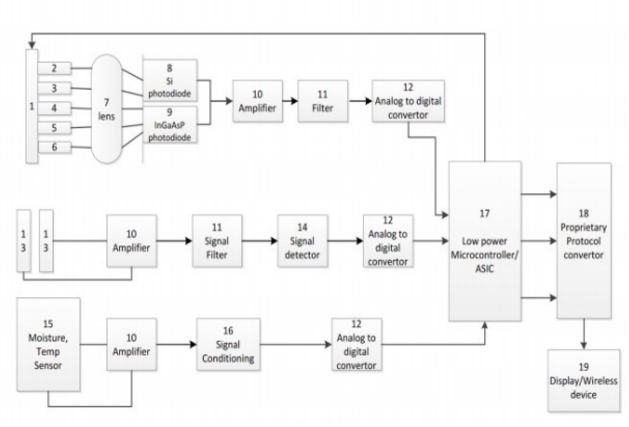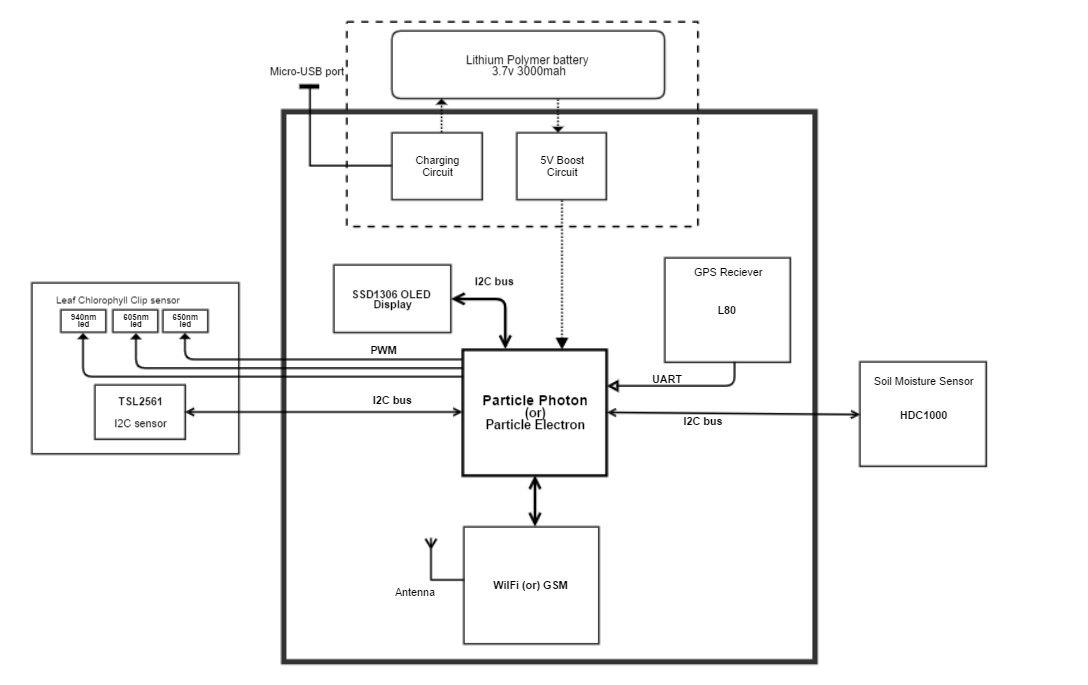Problem:
•The Farmers in developing nations currently needs to manually assess crop quality which may or may not lead to the right assessment
• Small Farmers are disconnected with use of technology
• Overusage or underusage of nitrogen fertilizer can result in financial and economical damage to farmer
• Existing systems are either too expensive and complex or are too narrow and limited to certain crop variety
• Data collection and sharing is nearly unavailable for farm sensing data
Existing Solutions:
Konica Miltona SPAD-502 meter:
It was a handheld device with a clip like apparatus which could be used to identify the signs of nutrient deficiency by non destructively sensing the leaf's chlorophyll concentration.
Pro's:
- Rugged build quality
- Accuracy
Con's:
- Very expensive (1000$+)
- Hard to interpret by normal farmers
- No network functionality
Upon using the SPAD meter myself I was able to realize the fundamental flaw with it, The SPAD meter was exclusively designed for use by researchers and scientists. It did not need to be used by a farmer, The SPAD meter outputted the SPAD value which needed to be interpreted for the particular crop variety to identify and quantify nutrient deficiency and a regular farmer would lack those tools.
Leaf Color Chart:
In the other end of the spectrum was the humble Leaf Color Chart
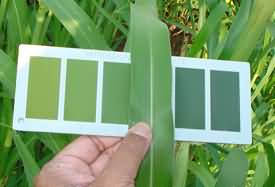
The leaf color chart was made by the International Rice Research Institute to help farmers make smarter decisions during fertilizer application, It however was hurdled by it's flaws leading to it's absense from farmers toolkit.
Pro's:
- Easy interpretation
- Validated by research institutions
- Extremely inexpensive
Con's:
- Only for select variety's of rice
- Difficult to read under strong sunlight
- Narrow perspective provided on status of crop
My goal was now set, I wanted FarmCorder to be a device that would be accurate like the SPAD meter while being inexpensive and provide farmers with actionable data about their crop while being easy to interpret.
Solution:
FarmCorder: The low cost sensor based agro advisory system
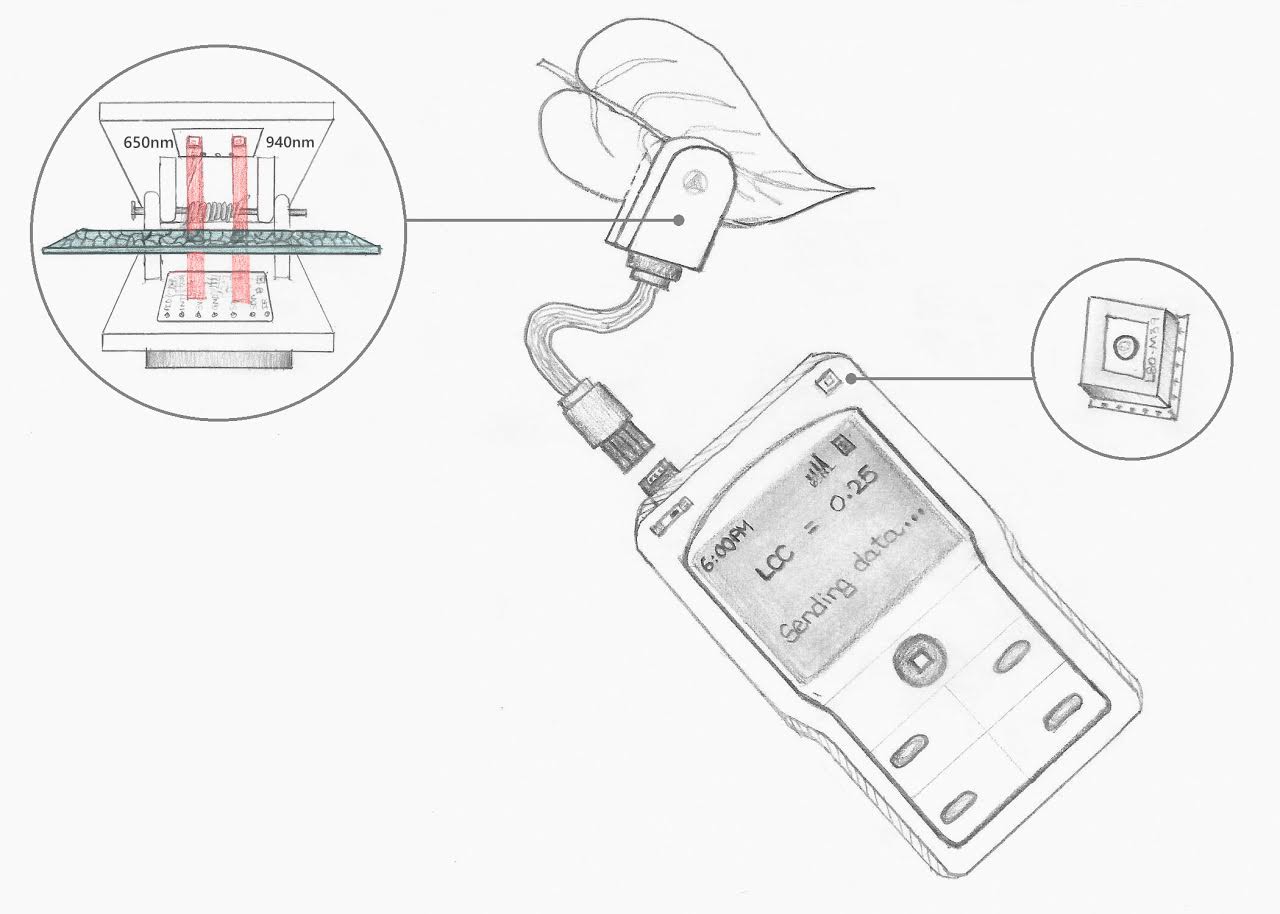
Here is a sketch of our proposed design, The device would be a rugged chunky device with a low power display and large battery with wireless connectivity and GPS.
Usage:
The farmer would periodically go around the feild and sample various leafs of the crop, All this data is stored with a time&location stamp from the GPS device.
This makes it possible for multiple farmers to share the same device using geofencing of their farm land. The measurements are to be taken twice a week.
The data goes to a cloud server where the data is compared with a nominal database for the same crop varitey along with the date from sowing. The divergence in leaf chlorophyll is extracted from the mean statistic and thus using a detailed fertilizer application plan is obtained and this along with a local weather reported is provided to the farmer using Interative Voice Response (IVRS) on his normal phone in the farmer's local language. The farmer would thus be able to correct any crop nutrition problems in the start.
This is the basic design of our project,The system has to be easy to use even by an uneducated farmer.A crop expresses it’s nutrient requirements through it’s leaves. Thus it is possible to evaluate the nutrient content of a crop through it’s leaves. The above block diagram illustrates the various components and sensing elements. The spectroscopy sensor consists of a multispectral light source consisting of LED’s of wavelength 650nm(Deep Red), 605nm (Orange),940nm (Infrared), 810nm(Near-IR) a 1330nm(Mid-IR) laser diode. The LED and laser diode intensity is adjusted by pulse width modulation using MSP430G2553 microcontroller. The Soil moisture based on the HDC1000 is attached to the soil piercing probe and the sensor itself is hermitically sealed to avoid damage, The sensor’s sensitivity is unaffected nonetheless thanks to the capacitive sensing method. FarmCorder prototype 1.0 would use only 650nm and 940nm LED for SPAD sensing the other features will be added soon in future versions,
The light sensor I originally wanted to use was the TI OPT101 sensor but to my dismay it was not sensitive to the infrared spectrum. I eventually decided to use the AMS's TSL2561 i2c light sensor as it had inbuilt amplification filtering and ADC conversion. I picked up the Sparkfun's TSL2561 sensor and designed my own custom variant including custom LED's and drivers.

I sent the PCB's off to get fabricated by OSHPARK.
I got my clip sensor done at last and tested using a simple clip with a strip of 3M double tape
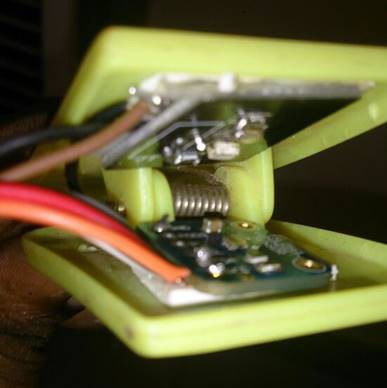
Here is the layout of our initial prototype:
We have chosen the Particle Electron to be center of our project connected to various peripherals like a GPS module, OLED. The device has two external JST connectors to connect the Leaf Chlorophyll clip sensor and a soil moisture sensor probe.
 Vignesh Ravichandran
Vignesh Ravichandran
